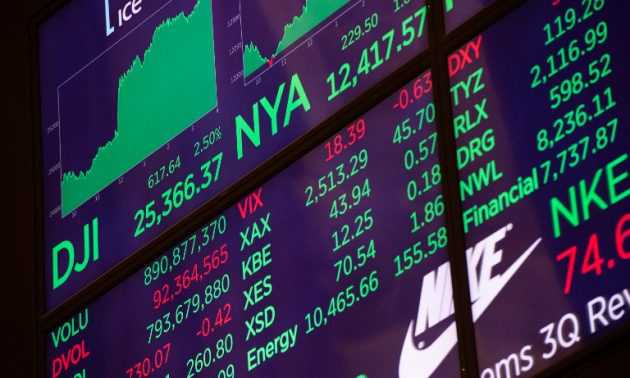On eve of Trump-Xi dinner, market predicts short-term truce
01 December, 2018

A consensus base-case scenario for a benign US-China trade outcome began to emerge on Friday, boosting US stock benchmarks ahead of a dinner between Donald Trump, Xi Jinping, and the trade delegations that have accompanied the two presidents to the G20 summit in Argentina.
The China equities-tracking ETF, FXI, significantly outperformed the broader market for the day.
In the week leading up to the most consequential event of the weekend, markets were somewhat ambivalent about the prospects for a constructive meeting. But, on Friday, optimistic remarks from the US president and the man who has emerged as the driving force of US trade policy, Robert Lighthizer, tilted sentiment clearly in the direction of expecting a deal, however light it may be on substance.
The cautious optimism, however, also sets up the possibility for a big disappointment and market selloff, should the talks end with no progress. At stake is a potential hike in the tariff rate on products already taxed, to 25% from 10%, and even the possible addition of US$267 worth of Chinese goods to the tariff list.
Both sides talk of progress
After word that some sort of agreement was in the works was leaked to major media outlets, the White House sounded optimistic on Friday.
Lighthizer said early on Friday that he would be surprised if the dinner was not a success, according to a report from Reuters.
While cautioning that any agreement will be “entirely up to” the presidents, he was sure of a “positive feel” on both sides.
Trump told reporters late in the day that “there’re some good signs” regarding the talks.
“Our staff is working [on the China trade talks], we have a lot of talented people working,” Trump said, adding: “Larry Kudlow’s representatives are dealing with them on a constant basis.”
“We’ll see what happens,” he said in conclusion.
One Chinese official was quoted by Reuters as saying that “consensus is steadily increasing” between the two sides, before cautioning that differences remain.
The cover story published in Chinese state-owned China Daily’s European Weekly on Friday said “fair winds predicted in Buenos Aires. Meanwhile, in a shift from recent rhetoric, noted China hawk and outside advisor to the Trump administration, China scholar Michael Pillsbury, told Bloomberg that US-China relations are improving and will likely get even better after the Trump-Xi dinner.
All of this talk is a far cry from just several weeks ago when officials on both sides said that talks had completely broken down.
No resolution on tough issues
Despite the growing expectation that the two sides are angling to leave the G20 on good terms, there remains a consensus that there is zero possibility of key issues being resolved in the short term.
At the heart of disagreements, notably on forced technology transfer and intellectual property protection, is a fundamental divergence in how each side views the relationship.
Since China’s accession to the World Trade Organization, the general understanding for both sides was that US companies would be granted access to China’s huge and growing market, while Chinese companies would get an opportunity to learn and develop domestic industries in the process.
That relationship held up for decades, but amid Xi Jinping’s push for China to become the leader in high technology industries, the arrangement has broken down.
Lighthizer is a leading proponent of completely overhauling the relationship to make rules for market access reciprocal and to protect US leadership in technology. Having led the successful negotiations to revamp trade deals with Canada, Mexico, and South Korea, he has also become the person the Chinese side is now seeking to engage with, following the failure to seal deals with other cabinet members.
Handshake deal
With little hope for tackling the key sticking points emphasized by the Trump administration, speculation is focused on the potential for a modest, short-term deal. Such an agreement could see the US side pledge not to increase rates on existing tariffs or add more Chinese products to the list, in exchange for concessions and a commitment to negotiate further.
There is a precedent for such a deal, which might look similar to an arrangement reached last summer between the US and the European Union to avoid slapping tariffs on imported cars.
Nonetheless, as Lighthizer pointed out, it is “entirely up to” Trump and Xi.
TAG(s):
